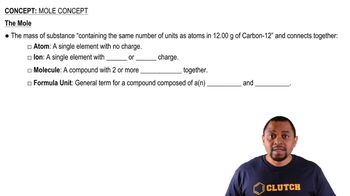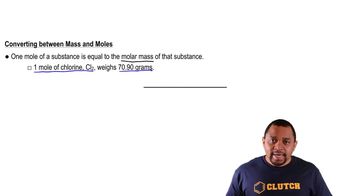Textbook Question
How many grams are in a mole of each of the following substances? (d) H2O
 Verified step by step guidance
Verified step by step guidance



How many grams are in a mole of each of the following substances? (d) H2O
How many moles of ions are in 27.5 g of MgCl2
How many moles of anions are in 35.6 g of AlF3?
What is the molecular weight of cholesterol if 0.5731 mol weighs 221.6 g?
Iron(II) sulfate, FeSO4, is prescribed for the treatment of anemia. How many moles of FeSO4 are present in a standard 300 mg tablet? How many iron(II) ions?
The 'lead' in lead pencils is actually almost pure carbon, and the mass of a period mark made by a lead pencil is about 0.0001 g. How many carbon atoms are in the period?